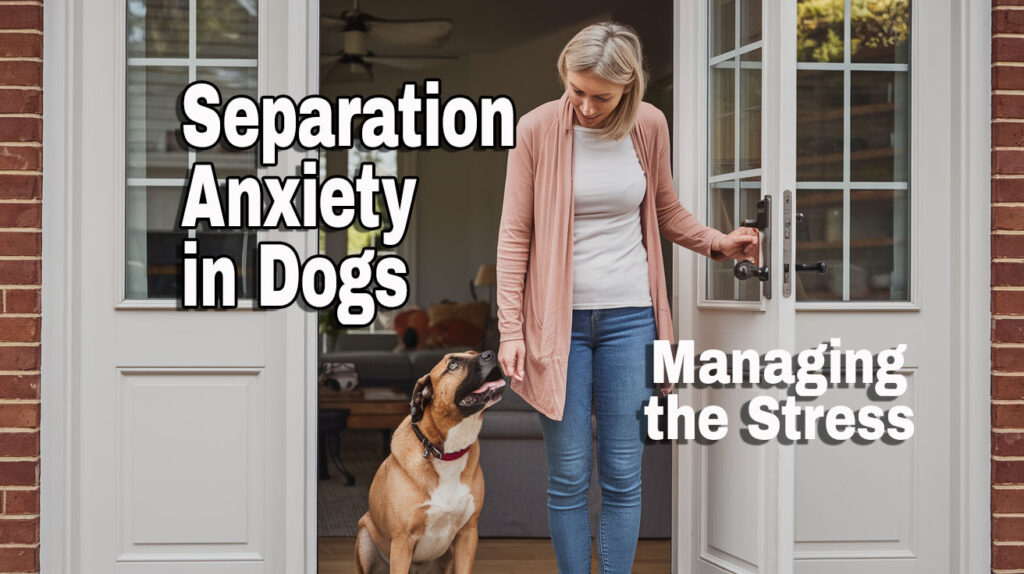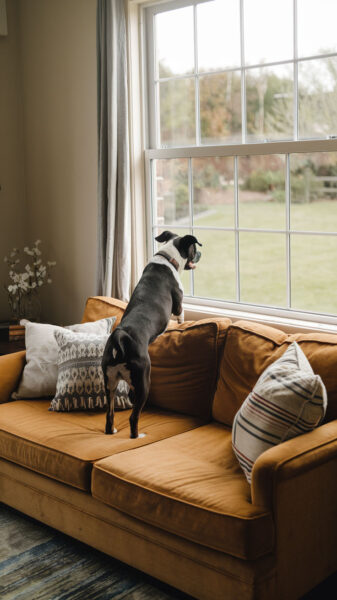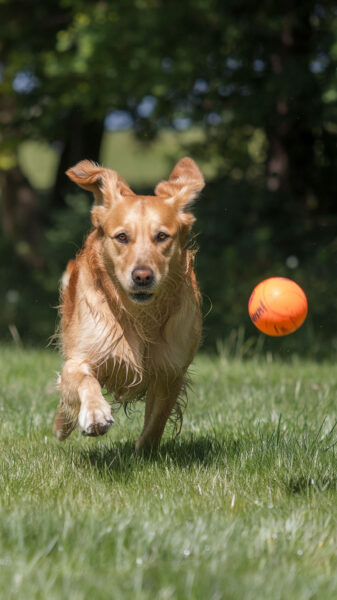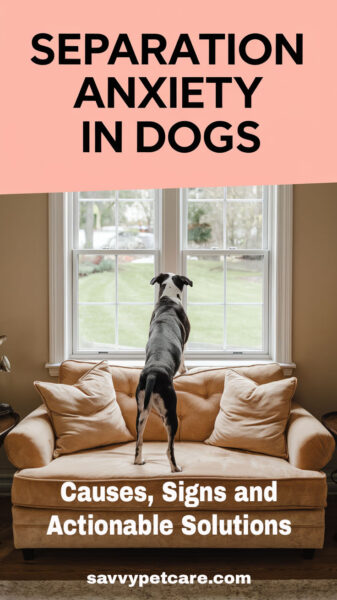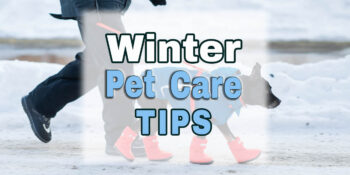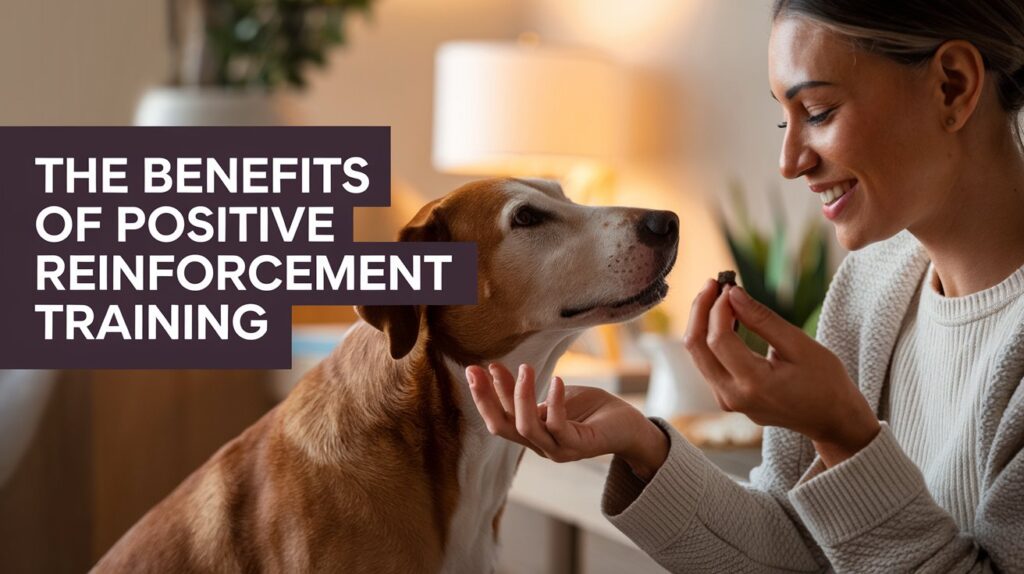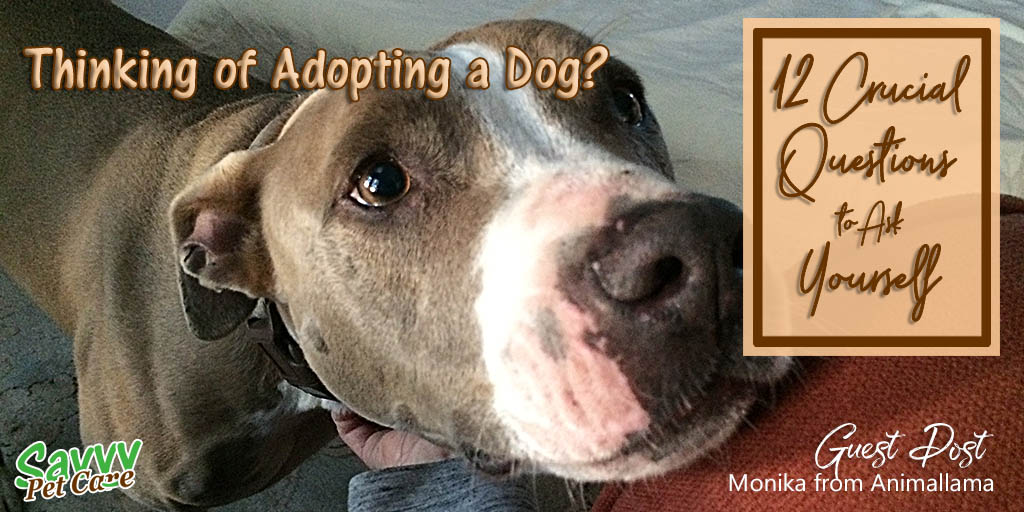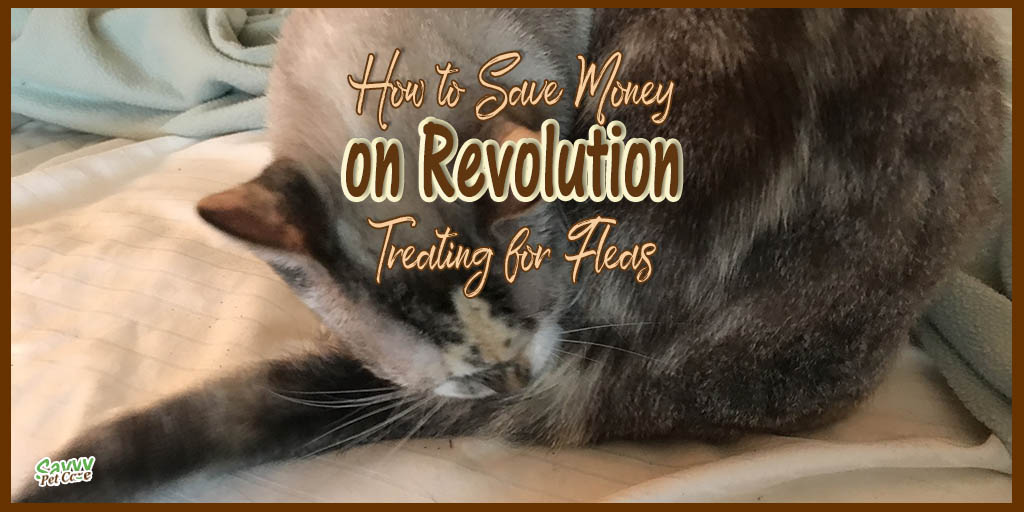Does your dog panic the moment you grab your keys or step out the door? Separation anxiety in dogs is a common yet often misunderstood condition that can leave both pets and their owners feeling stressed and frustrated. Dogs with separation anxiety experience intense emotional distress when left alone, leading to behaviors like barking, chewing, and even self-injury.
As a pet parent, it’s heart-wrenching to see your furry companion in such turmoil—but the good news is that there are effective ways to manage this condition. In this post, we’ll explore the causes, signs, and actionable solutions to help your dog feel more secure, even when you’re not home.
Common Causes of Separation Anxiety in Dogs
Separation anxiety in dogs doesn’t appear out of nowhere—there are often underlying causes or contributing factors that lead to this behavioral issue. Understanding these triggers can help you address the root of the problem and prevent it from escalating. While the exact cause varies from dog to dog, several common factors are often at play.
1. Changes in Routine or Environment
Dogs thrive on routine, and disruptions to their daily schedule can be stressful, potentially leading to separation anxiety. Changes such as a new job that keeps you away longer, a move to a new home, or the addition of a family member can unsettle your dog. For instance:
- Work Schedules: If your dog has been accustomed to your presence all day (e.g., during remote work or holidays) and suddenly has to adjust to you being gone for long hours, they may struggle to adapt.
- Relocation: Moving to a new home with unfamiliar sights, smells, and sounds can increase your dog’s anxiety, especially if they’ve lost their familiar surroundings.
2. Trauma or Past Negative Experiences
Dogs that have experienced trauma are significantly more likely to develop separation anxiety. This is particularly common in rescue dogs or those who have been rehomed multiple times.
- Abandonment: A dog who has been left behind by a previous owner may fear it happening again, leading to heightened panic when separated from their new family.
- Time in a Shelter: Shelter environments can be stressful and lonely, leaving lasting emotional scars. Even after adoption, these dogs may cling tightly to their new owner out of fear of being abandoned again.
3. Lack of Proper Training or Socialization
Dogs that have not been taught to handle alone time may struggle to self-soothe when their owner is away. Socialization and training are key during a puppy’s developmental stages, but some dogs miss out on this:
- Over-Attention in Puppyhood: If a puppy is never left alone and always has a companion, they may grow up overly dependent on that constant presence.
- Missed Opportunities for Independence: Dogs who haven’t been exposed to new environments or learned how to entertain themselves may find solitude particularly distressing.
4. Over-Dependence on the Owner
Some dogs form such strong bonds with their owners that they can’t handle being away from them, even for short periods. This over-dependence can develop due to:
- Constant Physical Closeness: Dogs that are allowed to follow their owner everywhere, including sleeping in the same bed or being carried around, may not learn how to be alone.
- Emotional Reinforcement of Clingy Behavior: If you always respond to your dog’s whining or clinginess by giving attention, they may develop the belief that they can’t cope without you.
5. Genetics and Breed Tendencies
Certain breeds are more prone to separation anxiety due to their temperaments or breeding purposes. For example:
- High-Energy Working Breeds: Dogs bred for tasks requiring close collaboration with humans (e.g., Border Collies, German Shepherds) may be more likely to develop separation anxiety when left idle or alone.
- Companion Breeds: Dogs like Chihuahuas, Cavalier King Charles Spaniels, and Pugs, bred for companionship, often become deeply attached to their owners, making separations more challenging.
How These Causes Interact
It’s worth noting that multiple factors can contribute to a dog’s separation anxiety. For instance, a dog might have a genetic predisposition, coupled with a traumatic shelter experience and a sudden change in routine. Addressing the condition requires identifying and understanding these overlapping causes.
By recognizing the specific factors that may have triggered your dog’s separation anxiety, you’ll be better prepared to address the underlying issues and implement strategies to help your dog feel more secure when you’re away.
Signs and Symptoms of Separation Anxiety in Dogs
Recognizing the signs of separation anxiety in dogs is essential for addressing the issue effectively. While some symptoms may seem like typical canine behavior, their frequency, intensity, and context (occurring when the dog is left alone) distinguish them from normal behaviors. Here’s what to look for:
1. Behavioral Symptoms
Dogs with separation anxiety often exhibit behaviors that reflect their panic and distress when left alone.
- Excessive Barking or Howling:
Dogs may vocalize loudly and persistently, especially soon after their owner leaves. This behavior is often a cry for attention or an expression of fear. - Destructive Behavior:
Chewing furniture, digging at doors, scratching walls, or even breaking through windows are common. These actions are often an attempt to escape and reunite with their owner. - Pacing:
Some dogs will pace back and forth along the same path repetitively, a clear sign of nervous energy. - Attempts to Escape:
Dogs may dig at floors, claw at doors, or even injure themselves trying to break out of the house or crate.
2. Physical Symptoms
In addition to behavioral changes, separation anxiety can cause physical manifestations of stress.
- Excessive Drooling or Panting:
Dogs may drool heavily or pant excessively due to heightened anxiety. - Trembling or Shaking:
Severe anxiety can cause dogs to visibly tremble or shake, even in a safe environment. - Loss of Appetite:
Dogs with separation anxiety may refuse to eat or drink while their owner is away, a sign of extreme emotional distress.
3. Bathroom-Related Issues
Dogs with separation anxiety may have accidents indoors, even if they are housetrained.
- Urinating or Defecating Indoors:
This is not a sign of spite but a stress response. Dogs may lose control of their bladder or bowels during moments of panic.
4. Pre-Departure Anxiety
Some dogs begin showing signs of anxiety before their owner even leaves the house. These behaviors include:
- Following the owner around constantly.
- Becoming agitated when the owner picks up keys or puts on shoes.
- Whining, panting, or pacing as soon as the owner begins their departure routine.
Why It’s Important to Identify These Signs
Many of these symptoms can also indicate other issues, such as medical problems or lack of training. If you notice these signs, it’s important to:
- Rule Out Health Issues: Consult a veterinarian to ensure there isn’t an underlying medical problem.
- Observe Patterns: Pay attention to when and how these behaviors occur. Separation anxiety symptoms typically happen only when the dog is left alone or anticipates being left.
- Act Early: The sooner you recognize and address separation anxiety, the easier it will be to manage and treat.
By understanding the signs and symptoms of separation anxiety, you can take the first step toward helping your dog feel calmer and more secure when they’re alone. Up next, we’ll explore the impact this condition has on both dogs and their owners.
The Impact of Separation Anxiety on Dogs and Owners
Separation anxiety doesn’t just affect the dog experiencing it—it creates a ripple effect that impacts the entire household. From emotional distress in your pet to frustration and stress for you, understanding the full scope of its effects is crucial for finding a path forward.
The Emotional Toll on Dogs
For dogs, separation anxiety is a deeply distressing experience that goes beyond the typical discomfort of being alone. It’s a panic-driven response that can cause both mental and physical strain.
- Chronic Stress: Dogs experiencing separation anxiety often remain in a heightened state of fear or panic during the entire time they are left alone. This chronic stress can lead to:
- Elevated cortisol levels, which over time can harm their immune system.
- Anxiety-related health problems, such as digestive issues or weight loss.
- Feelings of Insecurity: Separation anxiety reinforces a dog’s belief that being alone is unsafe, creating a cycle where they become increasingly reliant on their owner’s presence.
In severe cases, dogs may even develop additional behavioral issues, such as aggression or resource guarding, as their anxiety spills into other areas of life.
The Challenges for Owners
While the dog bears the brunt of the anxiety, owners often find themselves struggling too.
- Frustration and Exhaustion: Constant barking, destruction of property, or accidents in the house can test even the most patient pet parent. You may feel overwhelmed trying to manage these behaviors while juggling your daily responsibilities.
- Feelings of Guilt: Many owners feel guilty for leaving their dog alone, especially if they witness the distress firsthand. This guilt can lead to unintended behaviors, like giving excessive attention before leaving, which can unintentionally reinforce the anxiety.
- Financial Strain: Replacing chewed furniture or paying for repairs to scratched doors and floors can add up quickly. Additionally, seeking professional help from trainers, behaviorists, or veterinarians can be costly.
The Strain on the Bond Between Dog and Owner
Separation anxiety can create tension in the relationship between a dog and their owner. Constant worry about leaving the house, dealing with destructive behaviors, or feeling guilty about your dog’s distress can make it difficult to fully enjoy your time together. This strain can sometimes lead to rehoming or surrendering the dog, especially if the anxiety becomes unmanageable.
Long-Term Risks if Left Unaddressed
Without intervention, separation anxiety can worsen over time, leading to:
- Increased Behavioral Issues: Dogs may escalate their attempts to cope, such as breaking through windows or injuring themselves trying to escape.
- Health Problems: Chronic stress can lead to weakened immune systems, heart issues, and other stress-related conditions.
- Owner Burnout: The ongoing stress of managing an anxious dog can take a toll on your mental and emotional health, potentially leading to resentment or withdrawal from the relationship.
Why Addressing Separation Anxiety Matters
Separation anxiety isn’t just a phase—it’s a condition that requires active management and treatment. Addressing it early benefits both you and your dog, leading to:
- A calmer, happier pet who feels safe and secure even when alone.
- Less stress and frustration for you as a pet parent.
- A stronger, healthier bond between you and your dog.
The journey to overcoming separation anxiety may take time and patience, but the rewards of a confident, content dog and a more peaceful household are well worth the effort. Let’s move forward with actionable solutions to make life easier for both you and your furry friend.
For a practical demonstration of techniques to help dogs feel calm and relaxed when left alone, you might find this tutorial helpful:
How to Manage and Treat Separation Anxiety in Dogs
Managing separation anxiety in dogs requires a thoughtful and consistent approach. While there’s no one-size-fits-all solution, a combination of behavior modification, environmental changes, and, in some cases, professional intervention can help your dog feel more secure when left alone. Here’s a detailed look at the most effective strategies for managing and treating separation anxiety.
1. Preventative Measures
If your dog shows early signs of separation anxiety or you want to prevent it, taking these proactive steps can help:
- Gradual Alone-Time Training:
Start by leaving your dog alone for very short periods and gradually increase the duration. Begin with just a few minutes and work up to longer stretches, rewarding calm behavior upon your return. - Establish a Routine:
Dogs thrive on predictability. Maintain a consistent schedule for feeding, walks, and playtime to provide structure and reduce anxiety about your comings and goings.
2. Behavior Modification Techniques
Behavior modification focuses on helping your dog learn that being alone is safe and even enjoyable.
- Desensitization and Counterconditioning:
- Desensitization: Teach your dog to tolerate cues that indicate you’re leaving, such as picking up your keys or putting on your shoes, without becoming anxious. Start by performing these actions without actually leaving.
- Counterconditioning: Pair alone time with positive experiences, such as giving your dog a treat-filled puzzle toy or a special chew they only receive when you leave.
- Independence Training:
Encourage your dog to be comfortable spending time apart from you, even when you’re at home. Teach commands like “stay” or “go to your bed” to help them build confidence in being alone. Avoid allowing your dog to follow you everywhere, as this can reinforce their dependence.
3. Environmental Enrichment
Providing mental and physical stimulation can reduce anxiety and keep your dog occupied while you’re away.
- Interactive Toys:
Use puzzle toys, treat-dispensing balls, or Kong toys filled with peanut butter or frozen yogurt to keep your dog engaged. - Background Noise:
Leaving the radio, TV, or a white noise machine on can create a sense of normalcy and comfort. There are even playlists and videos designed specifically to calm dogs. - Create a Safe Space:
Set up a cozy area with your dog’s favorite blanket, toys, and a piece of your clothing that carries your scent. Crate training can also be effective if your dog finds the crate a comforting den-like space.
Crate training is a valuable tool for managing separation anxiety in dogs, providing them with a safe and comfortable space. For a comprehensive guide on crate training, you might find the following video helpful:
This video offers step-by-step instructions to help your dog become accustomed to their crate, promoting a sense of security during your absence.
4. Physical and Mental Exercise
A tired dog is a calm dog. Ensuring your dog gets adequate exercise and mental stimulation can reduce overall anxiety.
- Daily Walks and Playtime:
Regular exercise helps expend energy and promotes relaxation. Consider incorporating fetch, tug-of-war, or agility training into their routine. - Training Sessions:
Short obedience training sessions provide mental stimulation and strengthen your bond.
5. Professional Help
If your dog’s separation anxiety is severe or doesn’t improve with at-home strategies, consulting a professional is a crucial next step.
- Veterinarians:
A vet can rule out medical issues that might be contributing to your dog’s behavior and may recommend calming supplements or anti-anxiety medications if necessary. - Certified Dog Behaviorists or Trainers:
A behaviorist can develop a tailored plan for your dog, using advanced techniques to address their specific needs. Look for professionals with experience in treating separation anxiety.
6. Alternative Solutions
For some dogs, additional tools or therapies can complement traditional training methods:
- Calming Products:
Products like calming collars, sprays, or anxiety wraps (e.g., the ThunderShirt) can provide extra reassurance. - Doggy Daycare or Pet Sitters:
If feasible, consider arranging for someone to stay with your dog during times you’ll be away for long periods.
What Not to Do When Dealing with Separation Anxiety in Dogs
When it comes to managing separation anxiety in dogs, it’s just as important to know what not to do as it is to implement effective strategies. Certain actions, even if well-intentioned, can worsen the problem or create new behavioral issues. Avoiding these common mistakes will set you and your dog up for greater success.
1. Don’t Punish Your Dog
Punishment is never an effective solution for addressing separation anxiety. Your dog’s behaviors—such as barking, chewing, or having accidents indoors—stem from fear and stress, not defiance or bad intentions. Punishing them can:
- Increase their anxiety, making the problem worse.
- Damage the trust and bond between you and your dog.
- Lead to new behavioral issues, such as aggression or submissive urination.
Instead, focus on positive reinforcement to encourage calm and desirable behaviors.
2. Don’t Make a Big Deal About Leaving or Returning
It’s natural to want to comfort your dog before you leave or to greet them enthusiastically when you return, but these behaviors can inadvertently reinforce their anxiety.
- Why It’s Harmful:
Dramatic goodbyes and reunions signal to your dog that your absence is a big deal, heightening their anticipation and stress. - What to Do Instead:
Stay calm and neutral during departures and arrivals. When you leave, simply grab your things and go without fanfare. When you return, wait a few minutes before calmly acknowledging your dog.
3. Don’t Ignore the Problem
Hoping your dog will “grow out of it” or assuming the behavior will resolve itself is a common mistake. Without intervention, separation anxiety often worsens over time.
- Potential Consequences:
- Increased destructive behaviors, such as breaking through doors or windows.
- Physical harm, such as injuries from attempting to escape or excessive self-grooming.
- Chronic stress, which can lead to long-term health issues.
- What to Do Instead:
Address the issue as soon as you notice the signs. Early intervention is key to preventing more serious problems and improving your dog’s quality of life.
4. Don’t Use Crates as a Standalone Solution
Crates can be helpful tools for managing separation anxiety, but they’re not a quick fix. Without proper training, forcing a dog with separation anxiety into a crate can exacerbate their stress and lead to self-injury as they attempt to escape.
- What to Do Instead:
- Gradually introduce the crate as a positive, safe space.
- Use it in conjunction with behavior modification techniques and environmental enrichment.
- Ensure the crate is large enough for your dog to stand, turn, and lie down comfortably.
5. Don’t Rely Solely on Medications
While anti-anxiety medications and supplements can be helpful in severe cases, they should not be the sole solution for managing separation anxiety.
- Why It’s Harmful:
Medications may mask the symptoms without addressing the underlying behavioral issues. - What to Do Instead:
Combine medication (if prescribed by a vet) with training and behavioral modification for the best results. Medications should only be used as part of a comprehensive treatment plan.
6. Don’t Leave Your Dog Unprepared for Long Absences
Leaving your dog alone for extended periods without proper preparation can lead to heightened anxiety and destructive behaviors.
- What to Do Instead:
- Practice short absences to build their confidence.
- Arrange for a pet sitter, dog walker, or doggy daycare if you’ll be gone for a long time.
- Ensure they have plenty of physical and mental stimulation before you leave.
Why Avoiding These Pitfalls Matters
Managing separation anxiety requires patience and consistency. Avoiding these common mistakes will:
- Prevent worsening your dog’s anxiety.
- Help build your dog’s confidence and independence.
- Strengthen the trust and bond between you and your pet.
By focusing on positive, evidence-based strategies, you’ll be on the right track to creating a more secure and happy life for your dog, even when you’re apart. Next, let’s explore tools and resources that can make managing separation anxiety easier.
Recommended Products to Help Manage Separation Anxiety in Dogs
When dealing with separation anxiety in dogs, the right tools and products can make a big difference in creating a calming environment and keeping your dog engaged while you’re away. From interactive toys to calming aids, here are some highly recommended products to help your dog feel more comfortable and secure.
1. Interactive Toys and Puzzle Feeders
Keeping your dog mentally stimulated while you’re away is one of the best ways to manage separation anxiety. Interactive toys and puzzle feeders encourage independent play and provide a rewarding distraction.
- KONG Classic Dog Toy: A versatile toy that can be filled with treats or frozen peanut butter to keep your dog entertained for hours.
- Outward Hound Puzzle Feeder: Designed to challenge your dog’s mind and reward them with treats as they solve the puzzle.
- Snuffle Mat: Mimics the experience of foraging, giving your dog a fun and calming activity to focus on.
2. Calming Aids
Calming products can help reduce your dog’s anxiety by creating a soothing environment. These can be especially helpful during initial training or on days when you’ll be gone for longer periods.
- Adaptil Calming Collar: Uses synthetic pheromones to mimic a mother dog’s natural scent, helping dogs feel safe and secure.
- ThunderShirt Anxiety Wrap: Applies gentle, constant pressure to calm dogs in stressful situations.
- PetSafe Calming Spray: A portable, easy-to-use spray that creates a relaxing environment for anxious dogs.
3. Comfortable Crates and Beds
If your dog responds well to crate training, a comfortable and inviting crate can become their safe haven. Pair it with a cozy bed to make it extra inviting.
- MidWest Homes for Pets Dog Crate: Durable and secure, this crate is a great option for dogs with anxiety when properly introduced.
- Orthopedic Dog Bed: A plush, supportive bed that provides maximum comfort and can be placed in a crate or safe space.
- Calming Dog Blanket: Soft and infused with calming scents, this blanket can help comfort your dog in their resting area.
4. White Noise Machines and Calming Music
Background noise can help reduce anxiety by masking outdoor sounds that might trigger your dog.
- Yogasleep White Noise Machine: Creates consistent, soothing sounds to keep your dog relaxed.
- Pet Tunes Music Player: Preloaded with music scientifically proven to calm dogs.
5. Treats and Chews
Chewing is a natural stress-reliever for dogs, and providing long-lasting treats or chews can help keep them occupied.
- SmartBones Chews: A rawhide-free option that’s tasty and safe for dogs.
- Bully Sticks: A high-protein chew that keeps dogs busy and satisfied.
- Zuke’s Calming Dog Treats: Treats infused with natural ingredients like chamomile and L-theanine to help ease anxiety.
6. Monitoring Devices
If you want to check on your dog while you’re away, a pet monitoring device can provide peace of mind.
- Furbo Dog Camera: Allows you to see, talk to, and even toss treats to your dog remotely via your smartphone.
- Petcube Bites 2: A similar device with high-definition video and treat-dispensing capabilities.
How to Use These Products Effectively
To get the most out of these products, remember to:
- Introduce them gradually so your dog has time to become familiar with them.
- Use them alongside behavior modification and training for the best results.
- Rotate toys and chews to keep things fresh and engaging.
By combining the right products with patience and consistent training, you’ll be better equipped to manage your dog’s separation anxiety and create a calmer, happier environment for both of you.
Conclusion
Separation anxiety in dogs can be challenging for both pets and their owners, but with understanding, patience, and the right strategies, it is a manageable condition. By recognizing the signs, addressing the underlying causes, and implementing practical solutions, you can help your dog feel more secure and confident when you’re not home.
Remember, progress takes time—every dog is different, and what works for one may not work for another. Be consistent, celebrate small victories, and don’t hesitate to seek professional guidance if needed. Your dog’s well-being is worth the effort, and the bond you share will grow even stronger as they learn to trust that your absence is never permanent.
If you’ve faced separation anxiety with your dog, I’d love to hear your experiences. What worked for you? What challenges did you encounter? Share your thoughts in the comments below—your story might help another pet parent in need!
Thank you for reading, and here’s to a calmer, happier life for you and your furry friend!





